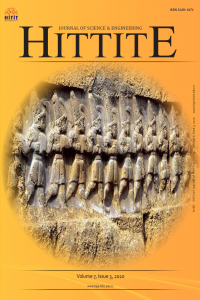Abstract
References
- Sohn H, Robertson AN. and Farrar CR. Holder exponent analysis for discontinuity detection. Structural Engineering and Mechanics An Int'l Journal, 17(3), 409-428, 2004.
- Ljung L, System identification -theory for the use, Prentice Hall, Englewood Cliffs, NJ, USA, 1987. Schwarz G. Estimating the dimension of a model. Annals of a statiscs, 6(2), 461-464, 1978.
- Vapnik VN. The Nature of Statistical Learning Theory, Springer- Verlag, New York, USA, 1998.
- Bishop CM. Pattern recognition and machine learning, Springer- Verlag, New York NY, USA, 2006
- Osuna EE, Freund R. and Girosi F. Support vector machines: training and applications, A,I. Memo No: 1602, C.B, C.L, 144, Massachusetts, 1997.
- Haykin S. Neural Networks, A comprehensive Foundation, Macmillan, London, UK, 1995.
- Osabe K and Kato T. Estimation of standards compliance uncertainty for radiated emission measurement in the PT program, inProc. IEEE Int.Symp. Electromagn. Compat., Long Beach, CA, USA, Aug. 14–19, pp. 994–998, 2011.
- Fawcett T. An introduction to ROC analysis, Pattern Recogn. Lett. 27, 861–874, 2006.
- Raczko E and Zagajewski B. Comparison of support vectormachine, random forest and neural network classifiers for tree species classification on airbornehyperspectral APEX images, European Journal of Remote Sensing, 50(1), 144-154, 2017.
Abstract
Developments in engineering techniques have concentrated on how to build better solutions for engineering structures in order to main the integrity and to reduce the costs in operations. Since the last two decades, advances in computational power have allowed machine learning algorithms to be applied as a powerful tool in anomaly detection problems, classification as well as in regression analysis. The objective of this study is to detect the damage using the vector auto regression model VAR coupled with support vector machines SVM . A base excited three storey manufactured from an aluminium is investigated in a lab medium for various structural states. Accelerometers are fastened to the each corner of structure's floor to collect time series data. Damage simulation scenarios in structure are performed by releasing the bolt load which cause the nonlinear effects. Once the sensors' measurements are collected for each state and organized to represent the appropriate scenario's label, they are processed in VAR model to obtain feature vectors such as residuals and VAR parameters. Then, SVM with optimal kernels are implemented on those features to classify and locate the damage. The results demonstrate that the VAR residuals shows a significant performance over VAR parameters once they are used as features in SVM technique. Moreover, it is also found that detection performance rises as the number of damage increases.
Keywords
Structural health monitoring Pattern recognition Machine learning Damage diagnosis Vector autoregressive - Support vector machines
References
- Sohn H, Robertson AN. and Farrar CR. Holder exponent analysis for discontinuity detection. Structural Engineering and Mechanics An Int'l Journal, 17(3), 409-428, 2004.
- Ljung L, System identification -theory for the use, Prentice Hall, Englewood Cliffs, NJ, USA, 1987. Schwarz G. Estimating the dimension of a model. Annals of a statiscs, 6(2), 461-464, 1978.
- Vapnik VN. The Nature of Statistical Learning Theory, Springer- Verlag, New York, USA, 1998.
- Bishop CM. Pattern recognition and machine learning, Springer- Verlag, New York NY, USA, 2006
- Osuna EE, Freund R. and Girosi F. Support vector machines: training and applications, A,I. Memo No: 1602, C.B, C.L, 144, Massachusetts, 1997.
- Haykin S. Neural Networks, A comprehensive Foundation, Macmillan, London, UK, 1995.
- Osabe K and Kato T. Estimation of standards compliance uncertainty for radiated emission measurement in the PT program, inProc. IEEE Int.Symp. Electromagn. Compat., Long Beach, CA, USA, Aug. 14–19, pp. 994–998, 2011.
- Fawcett T. An introduction to ROC analysis, Pattern Recogn. Lett. 27, 861–874, 2006.
- Raczko E and Zagajewski B. Comparison of support vectormachine, random forest and neural network classifiers for tree species classification on airbornehyperspectral APEX images, European Journal of Remote Sensing, 50(1), 144-154, 2017.
Details
| Primary Language | English |
|---|---|
| Journal Section | Research Article |
| Authors | |
| Publication Date | September 30, 2020 |
| Published in Issue | Year 2020 Volume: 7 Issue: 3 |
Hittite Journal of Science and Engineering is licensed under a Creative Commons Attribution-NonCommercial 4.0 International License (CC BY NC).


